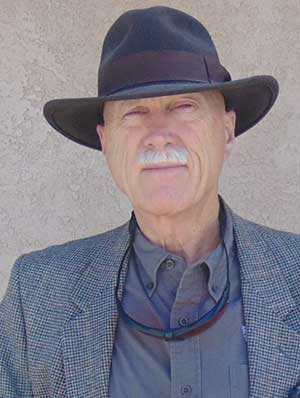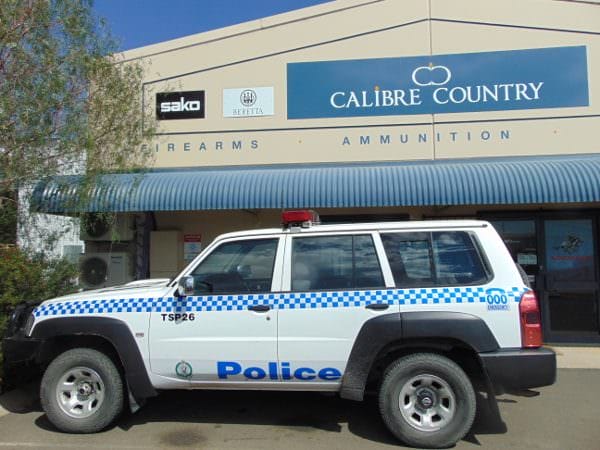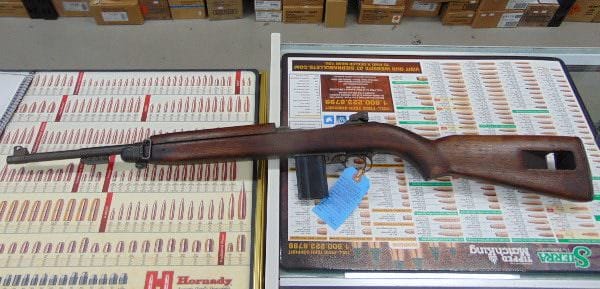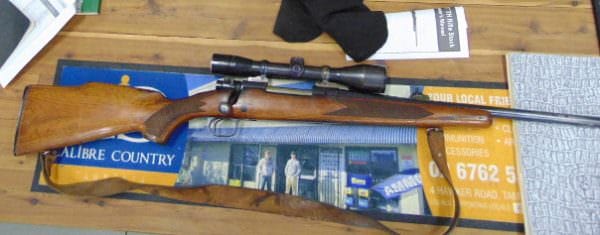By Dean Weingarten


Arizona -(Ammoland.com)- I arrived in Australian on 1 July, 2017, the first day of the gun amnesty in Australia. I will be returning to the United States on 26 September at the tail end of the three month amnesty.
This amnesty is completely different from the mandatory confiscation/turn-in that happened in 1996. In 1996 people were paid to turn in firearms.
Some types of guns were effectively outlawed for nearly everyone. Perhaps the strictest firearms regulatory scheme in Western Civilization was implemented on the wave of emotion promoted by the media and John Howard.
In 2017, some sanity is returning to firearms regulation in Australia, however fitfully and in small increments. The government is not paying for any guns to be turned in. Guns can be turned in to gun shops to be sold, they can be registered to people who are licensed gun owners; or they can be destroyed.
I happened to be at Calibre Country in Tamworth, New South Wales when they turned over 40 guns to the police to be destroyed.

Of the guns turned in, quite a few made sense, given the extreme restrictions. It is unlikely that Calibre Country would have been able to sell the 11 common, older, and much used air rifles in the group. An air rifle is considered as much a firearm under Australian law as a double barreled 12 gauge or a pump action .22 rimfire. The costs for keeping air guns are as expensive as for keeping real firearms. There is little sense in keeping old and marginal air guns.
There was the old H&R Young American .22 revolver, a couple of sawed off rifles, 17 rusty, beat up .22 bolt guns and beat up .22 semi-autos.

The small .22 revolvers must have been popular in Australia. I saw another one at a location I cannot recall.
There was the badly rusted 1916 Spanish Mauser carbine and six old single and double barreled shotguns. There was a model 92 Winchester, missing a magazine, and badly misused. There was a Model 4 Remington Rolling block in .22 rimfire, a bit rusty but probably serviceable.

I would have thought to rehabilitate three of the shotguns and the Remington Rolling block. The store employees did not consider them worth the effort. The double hammered .410 made in Leige, Belgium seemed in pretty good shape. I thought it was cute, and looked to be foldable. An engraved Spanish double from Eibar might have been worth while. I could not be sure its forend was in the parts bag. A utilitarian double by Iver Johnson, Hercules grade 12 gauge, looked in fair shape, and worth a couple of hundred. Maybe Australians don’t like the side by side guns.

The people at Calibre said only 1-2 percent of the people who turned in guns insisted the guns be destroyed.
I checked with an employee at Tamworth firearms to see if he agreed. He said the number was about right. People who insisted a gun be destroyed were very rare. I asked him how many airguns were turned in. He said, definitely more than 20%. There were 11 airguns in the guns turned in at Calibre, or 27%.
One gun the Calibre shop kept was an M1 carbine made by Quality HMC during WWII. In Australia it is worth about $1,000. Since the confiscation/turn-in in 1996, they have become rare. It will likely be picked up by a collector.

Amnesty turn-ins were strong at first, then settled down to a steady trickle of a gun or two a day at Calibre. It has picked up a bit as the amnesty nears its end, according to employees at both shops I visited.
I was told the Shooters, Fishers, and Farmers party is lobbying for a permanent gun Amnesty. It makes sense for the authorities to encourage people to register guns that are “off the books”. Another source assured me there are more guns “off the books” than there are registered guns in Australia. He referenced the statistic that only 13% of the estimated “banned” guns were turned in in 1996. About 640,000 were turned in and destroyed at that time. Another person told me that he turned in broken guns to receive $600 each in 1996. He watched in horror as a classic English double was destroyed before his eyes.
More than 24 thousand guns will have been turned in to be destroyed or registered in the last three months. It is unknown how many were registered instead of being destroyed, but it is a significant number, perhaps more than half. With less than two weeks to go in the Amnesty, I was in Calibre Country when three classic firearms were brought in to be registered. They were a pre-1964 model 70 Winchester in .222 Remington with a quality, European, Kales 6X scope, a nice Hollis double barreled 12 gauge shotgun, and a CZ Bruno .222 with a factory set trigger, a heavy barrel and a Burris variable scope. All had seen considerable use, but were quite serviceable.
I overheard “they were his father’s”. I wonder how many father’s faithful firearms are still out there. A perpetual amnesty seems even more desirable.

I saw few used guns at the shops. I was informed that used guns are immediately purchased, and do not make their way to the display racks.
The Australian system of extremely tight regulation and control is not acceptable to the American electorate. America has the advantage of the Second Amendment. Australia may have inherited the Englishman’s right to arms, but the courts stopped recognizing it a few decades ago.
In Australia, the political clout is with legal gun owners. The more people that register guns in Australia, the more they will be able to reverse the heavy handed regulations.
©2017 by Dean Weingarten: Permission to share is granted when this notice is included.
About Dean Weingarten:
Dean Weingarten has been a peace officer, a military officer, was on the University of Wisconsin Pistol Team for four years, and was first certified to teach firearms safety in 1973. He taught the Arizona concealed carry course for fifteen years until the goal of constitutional carry was attained. He has degrees in meteorology and mining engineering, and recently retired from the Department of Defense after a 30 year career in Army Research, Development, Testing, and Evaluation.
